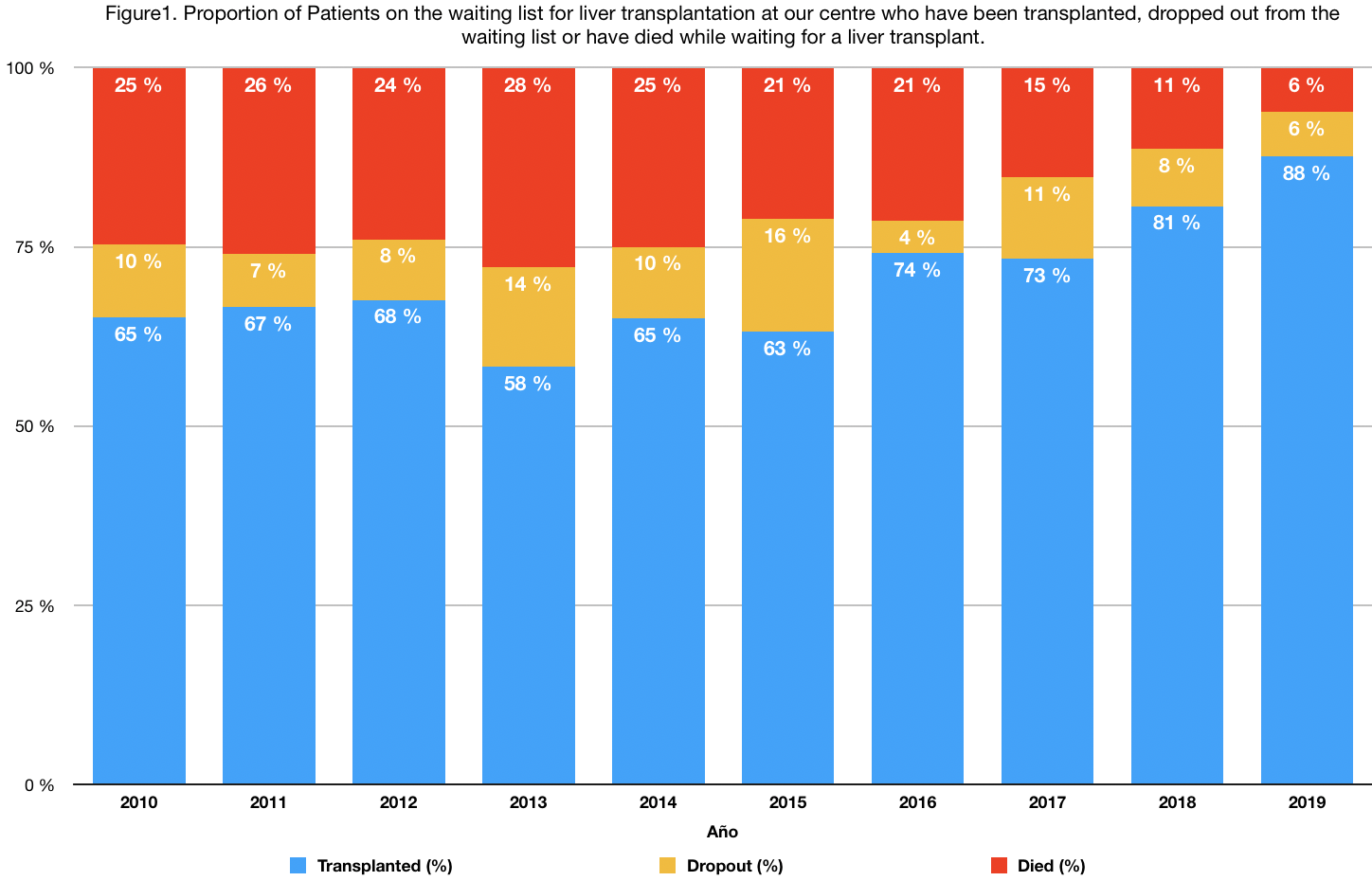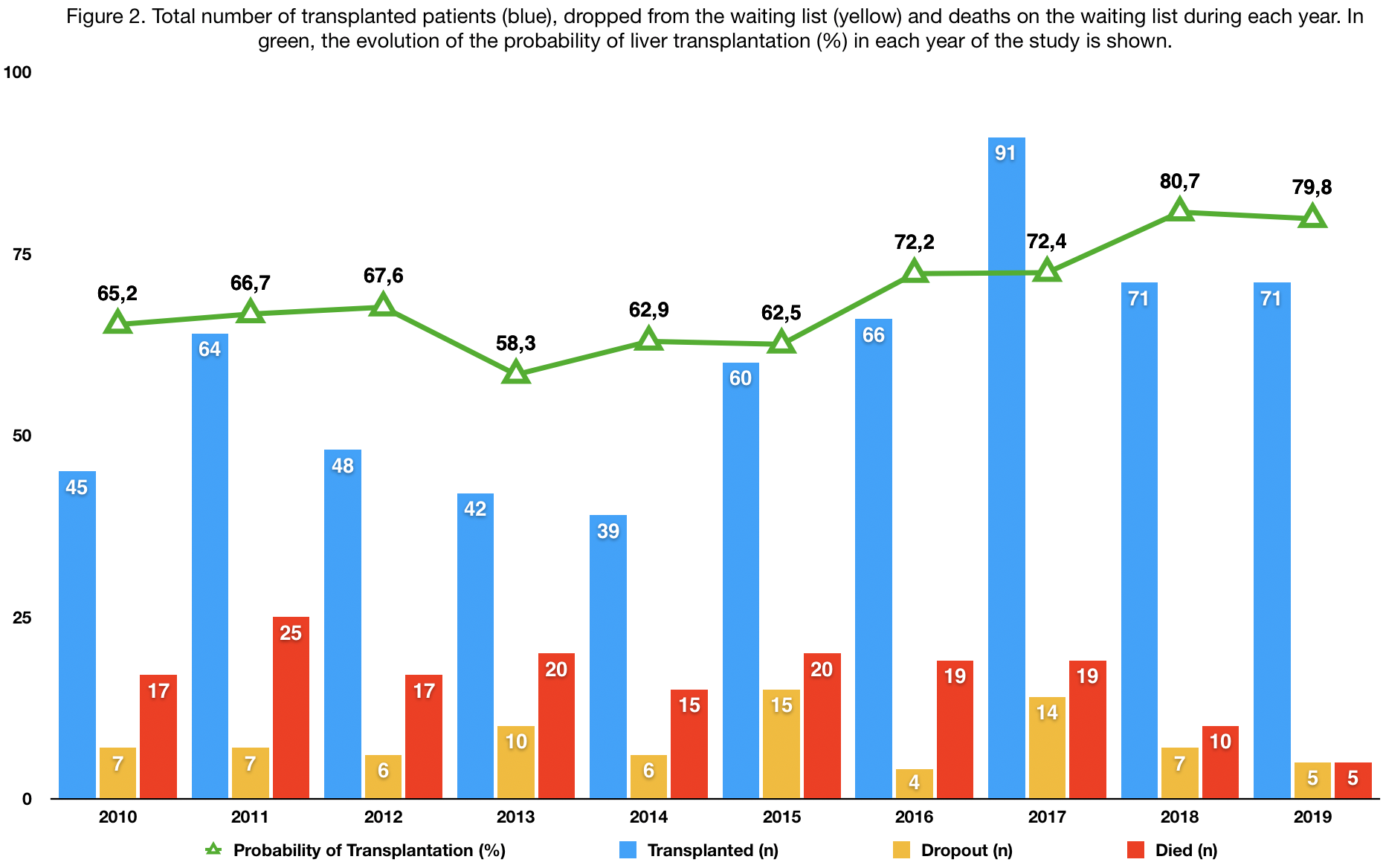
Impact of controlled donation after circulatory death (cDCD) on waiting list mortality for liver transplantation in the last 10 years: The Spanish experience
Felipe Alconchel1,4, Pedro Antonio Cascales-Campos1,4, Mario Royo-Villanova2,4, Laura Martínez-Alarcón1,4, Beatriz Febrero1,4, Luis Alberto Martínez-Insfran1,4, Antonio Ríos1,4, Juan Ángel Fernández-Hernández1,4, José Manuel Rodríguez1,4, Tatiana Nicolás1,4, José Antonio Pons3,4, Pablo Ramírez1,4.
1Surgery and Organ Transplantation, Clinical University Hospital Virgen de la Arrixaca, Murcia, Spain; 2Intensive Care Unit, Clinical University Hospital Virgen de la Arrixaca, Murcia, Spain; 3Hepatology, Clinical University Hospital Virgen de la Arrixaca, Murcia, Spain; 4Biomedical Research Institute of Murcia (IMIB-Virgen de la Arrixaca), Murcia, Spain
Controlled donation after circulatory death (cDCD) provides one third of liver donors in Spain nowadays. The aim of our work is to evaluate the impact that cDCD has had on the evolution of mortality on the waiting list for liver transplant at our hospital over the last 10 years.
We retrospectively analyzed liver donation and transplant activity data at our center over the past 10 years through our records and those of the Spanish National Transplant Organization (ONT).

Figure 1 shows the percentages of patients on the liver transplant waiting list who were transplanted, dropped-out from the list, or died on the list during the last 10 years (2010-2019). It should be noted that in the pre-cDCD era (before 2014) the mortality rate on the list was above 20%. However, in the age of controlled-DCD (from 2014 onwards) this percentage has decreased to 6% in 2019. As for the probability of liver transplantation per year (Figure 2), it has remained in progressive ascent despite the high rate of indication for liveer transplantation in our group (69.4 pmp, year 2018), the highest in Spain.

The successful introduction of the controlled donation after circulatory death program at our hospital has reduced the mortality rate on the waiting list for liver transplants by 19% in 5 years. The probability of liver transplantation per year has increased by up to 20%.
Therefore, cDCD has allowed us to significantly reduce mortality on the waiting list for liver transplantation.
There are no comments yet...